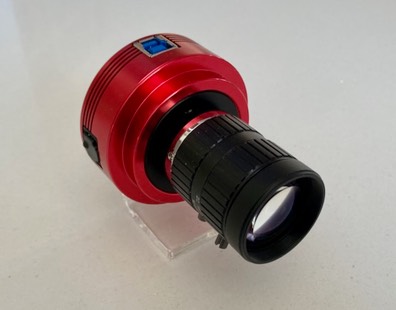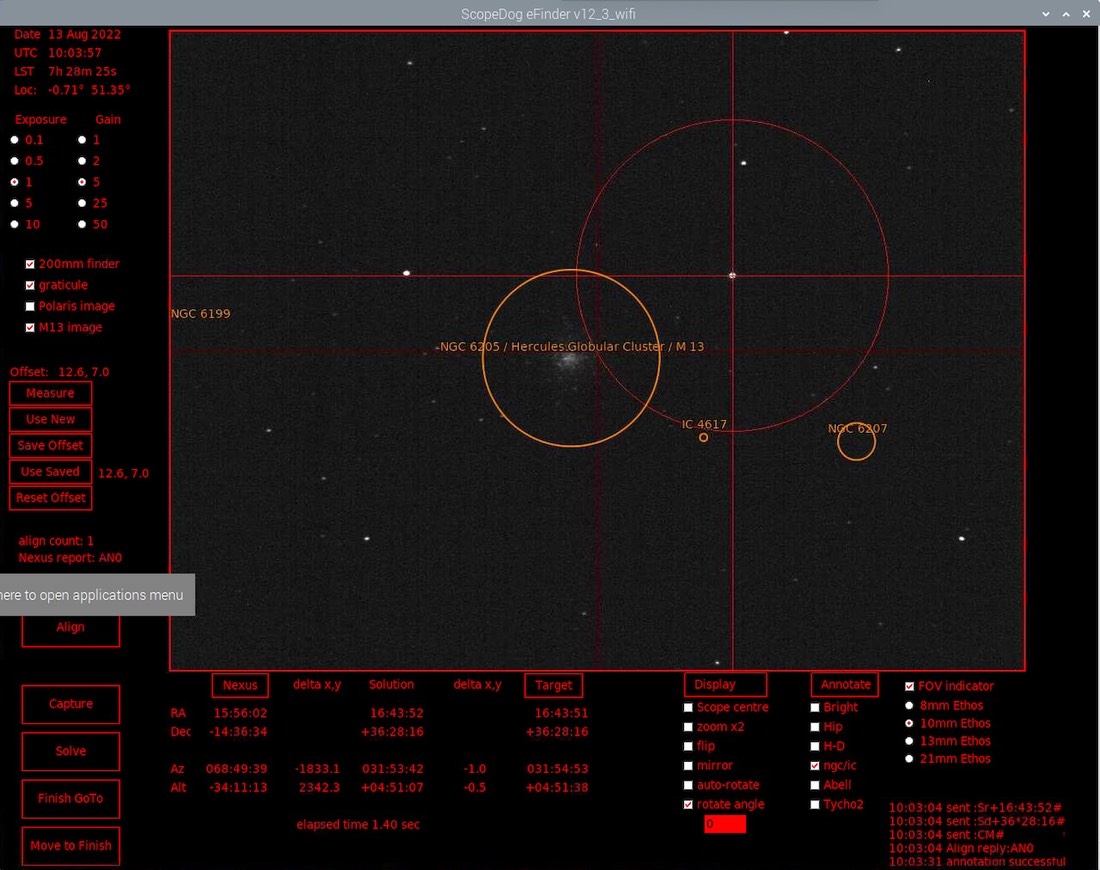Astrophotographers have long been using digital finders to ensure their main telescopes are centred on the target of choice. Relatively low cost yet high performing cameras, telescopes and processors have been integrated into the overall imaging process, greatly improving the experience. What could this technology do for visual observers?
The development followed a tortuous path while various solutions were tried. This can be read here.
The ‘final’ system is a result of testing the options and getting feedback from others brave enough to build their own copies. The gallery shows images of the various parts.
Recently added is a ‘Lite’ version. A single box solution with just one cable to the Nexus DSC, from where it also gets its power.
Functionality
- Make initial two star alignments easier. Instead of aligning on Named Stars in the Nexus catalogue, you can just point the scope at a convenient part of the sky and the eFinder will determine the position very accurately and send the result to the Nexus DSC as a pseudo alignment ‘star’.
- 'Local Sync’ is easy. The eFinder quickly resolves true RA & Dec of where it is pointing and sends that to the Nexus DSC as a local sync point.
- Refine Goto’s if drives are fitted. The drive typically gets within 10 arc mins of the target. The errors are down to initial Nexus DSC alignment and the stability and orthogonality of the scope mount.
The eFinder can automatically finish the goto by sending the scope drive commands to close out any error. - The eFinder can display a simple red LED text display on a hand box, or a full GUI on a connected PC or tablet. This includes the image that has been captured and solved. This image can have the eyepiece field of view and orientation superimposed, along with say ngc objects annotated. very handy to help identify what is in the main scope eyepiece.

The 'standard' eFinder system comprises,


- ASI120MM-S camera, chosen for its low price, good performance and availability of drivers compatible with Python coding.
- 50mm f/1.8 cctv lens, affordable, mounts directly to the camera, fast and more than adequate image quality.
- Raspberry Pi 4B or 5 4GB. Loaded with the latest Raspian OS.
- A local build of Astrometry.net on the Raspberry Pi. Well proven code and fast if set up right. Many features which made the eFinder powerful and user friendly.
- USB conected hand box with a Raspberry Pi Pico board, OLED display and 5-way navigation switch. Full control of the eFinder and easily mounted near the eyepiece.
- Optional GUI display - provides many features, including image display, object annotation, eyepiece indicators, etc. The display can be on a a computer or tablet connected via wifi, or a dedicated display built into the Raspberry Pi case.

The eFinder needs a Nexus DSC (standard or Pro) to interface into the telescope drive (either ScopeDog or ServoCat)
- The current Nexus DSC firmware includes the necessary commands to work with eFinder
- The eFinder has been tested with both ScopeDog & ServoCat drive systems. It should work with other goto AltAz drives connected to the Nexus DSC.
If anyone want to build their own copy - try these instructions